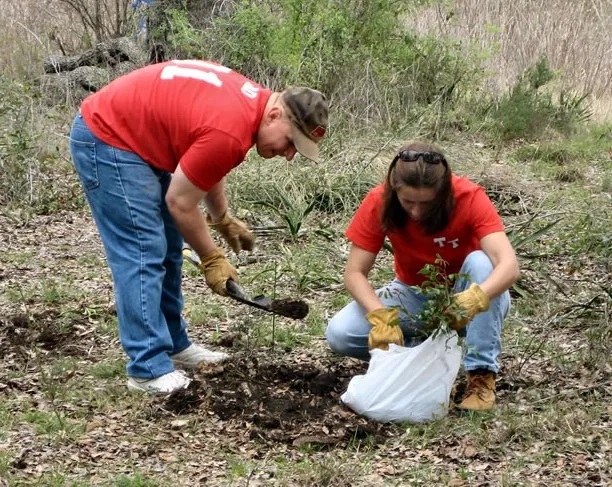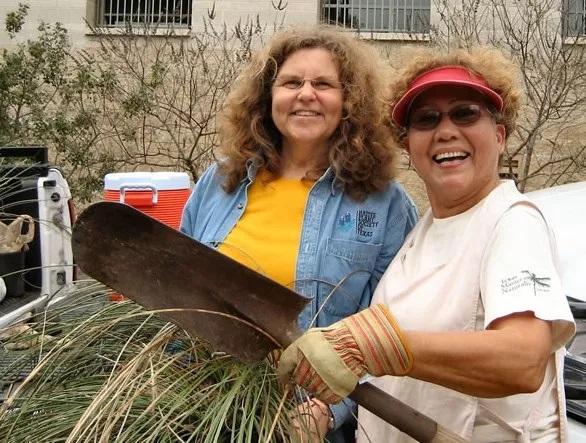Author: Bill Ward
Agnes Hubbard, co-founder of the Hill Country Daily Bread Ministries (HCDBM), recognized that it would be a shame to destroy all the native plants on the property where her organization will build a new warehouse. Fortunately, HCDBM volunteers Connie and Melvin Carley are familiar with the Plant-Rescue Committee that the Boerne Chapter of the Native Plant Society of Texas (NPSOT) organized to collect and save native plants growing on future construction sites. Mrs. Hubbard allowed members of the rescue team to dig up several varieties of wildflowers and shrubs that otherwise would have had to be lost to construction.
One of the first committees formed when the Boerne Chapter of NPSOT was started nearly ten years ago was the Plant-Rescue Committee. We recognized that Boerne was rapidly changing from a Hill Country village to a hub of suburban development. Much of the land where native plants thrived would be covered with buildings and parking lots. This is only to be expected in areas of rapid population growth.

Does this urbanization mean we need to lose these native plants in this part of the Hill Country? Not necessarily. A good way to ensure that our local native-plant species survive is to transplant them from sites of future construction to community gardens and residential yards. That’s why the Plant-Rescue Committee was one of the first standing committees of the Boerne Chapter.
Recently the Plant-Rescue Committee has been revitalized by the energetic dedication of a new NPSOT member, Veronica Hawk. Veronica came to this area from Georgia, where she was involved in a very successful program to save native plants that are being removed by urban sprawl.
Commonly landowners are quite interested in what native plants are on their land, but at the same time they are a little fearful that finding a rare species might bring some governmental control on how they use or dispose of their land. I would be sympathetic to their feelings if I didn’t know that native plants are not a factor in federal, state, or county regulations of private land. Very few plants have made the federal Endangered Species list, and as far as I know, none of those grow in the Boerne area.
However, one of the strengths of the Boerne Chapter plant-rescue program is that Veronica Hawk carefully has organized the plant rescues to be considerate of the land owners who are gracious enough to allow plant rescue on property destined for development.

For example, a limited number of participants are allowed at any rescue, and all must sign both a liability release form and a participant agreement. By signing the agreement, the participant agrees not to sue the landowner or NPSOT, and he agrees not to speak with or notify anyone outside of NPSOT about the rescue site.
The NPSOT participant also agrees that he will not interfere in any way in the development of the property or benefit financially from the sale of the plants. Participants willingly adhere to this code of conduct, because the rescue program relies on the generosity and trust of the landowner.
These plant rescues also are good learning experiences for the NPSOT participants. I first learned to identify a number of native plants many years ago when we rescued natives from a future building site on the I-10 access road near Leon Springs.
Today that area has no natural vegetation, but species collected there still thrive at Cibolo Nature Center, some school gardens, and several yards, including ours. This means that our general ecosystem still supports the birds, mammals, butterflies, and soil microbes that depend on those native plants… even with the urban sprawl.
